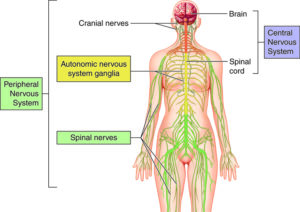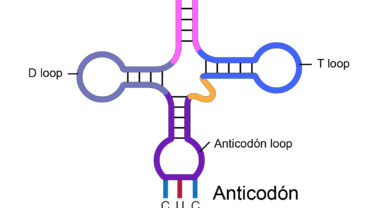Autonomic nervous system
Autonomic nervous system:
autonomic nervous system (ANS) A division of the nervous system of vertebrates. The nervous system consists of two major subdivisions. The central nervous system (CNS) and the peripheral nervous system (PNS). The central nervous system (CNS) made up of the brain and spinal cord. The peripheral nervous system (PNS) comprises ganglia and peripheral nerves outside the brain and the spinal cord. The peripheral nervous system is divided into two parts. The somatic, which is concerned with sensory information about the environment outside the body as well as muscle and limb position. And the autonomic nervous system that regulates the internal environment of vertebrates. It consists of the sympathetic (fight/flight), parasympathetic (rest/rebuild), and enteric nervous systems. The ANS is involved in the function of virtually every organ system.
The parasympathetic nervous system takes care of essential background operations such as heart/lungs and digestion. While the sympathetic nervous system provides stress-response and procreation strategies and functions. The enteric nervous system takes care of controlling the function of the gut.
Moreover the sympathetic nerves form part of the nerve network connecting the organ systems with the central nervous system. The sympathetic nerves permit an animal to respond to stressful situations and helps control the reaction of the body to stress. Examples of the sympathetic reactions are; Increase in heart rate, decrease in secretion of salivary and digestive glands, and dilation of pupils. The parasympathetic nerves connect both somatic and visceral organs to the central nervous system. And their primary action is to keep body functions normalized. The ANS works to conserve the body’s resources and to restore equilibrium to the resting state.





